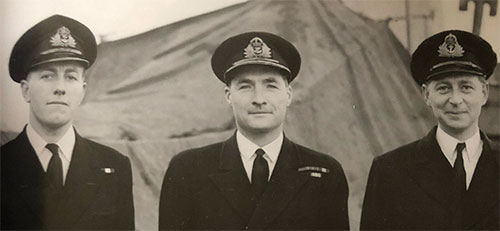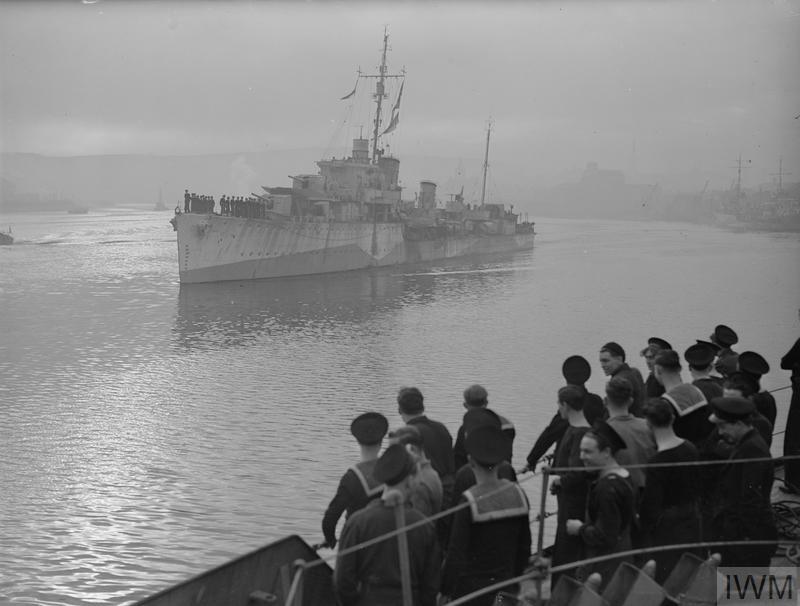
 HMS VIDETTE
HMS VIDETTE
The aftermath of Convoy ONS.5
Lt Raymond Hart RN continues the story of
HMS Vidette and Escort Group B7
More convoys - D Day - the Scrapyard
 Lt Raymond Hart, Cdr Peter W Gretton and Lt Cdr James Plomer RCNVR
| “The Canadian Corvette Kitchener,
on passage to UK, had joined up with us, which was fortunate as we had
to leave one of the trawlers behind. The escort therefore
consisted of two Destroyers, one Frigate, five Corvettes, a Rescue
Trawler and a hospital ship. The first night out in very low visibility, my radar operator picked up a large iceberg in the path of the convoy. Naturally I was detailed to stand by it and indicate it by all means possible. All our upper deck lighting was switched on and our large signalling lamps were trained on the iceberg and we sounded our siren. All ships managed to get past without incident – I was glad when it was over! The next morning, 16th May, the fog cleared, which gave the Captains the chance of a quick kip. What, with a busy and somewhat jubilant few days in St. Johns, followed immediately by fog at sea, we were all feeling a bit jaded. |
